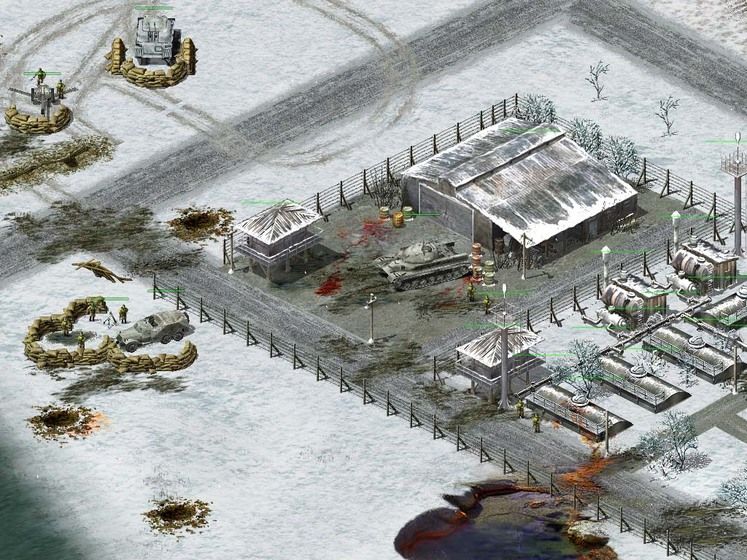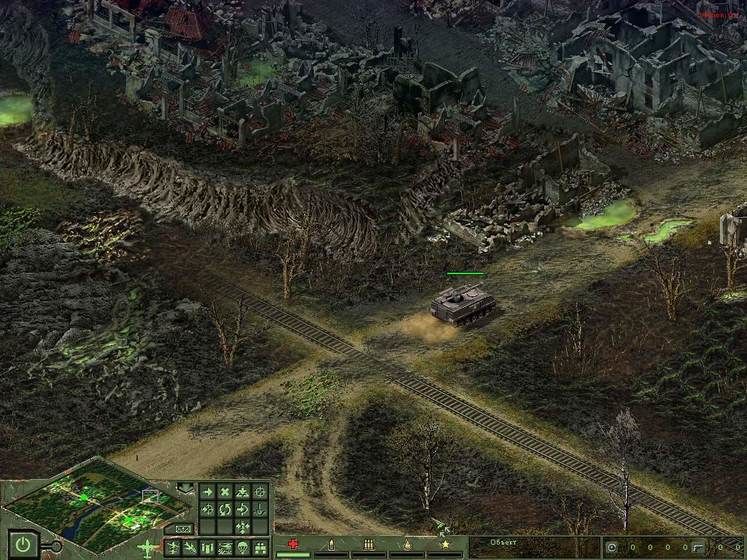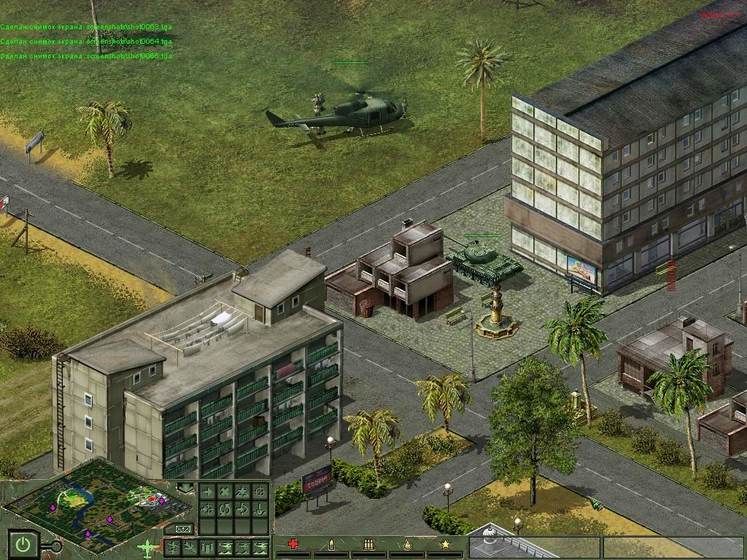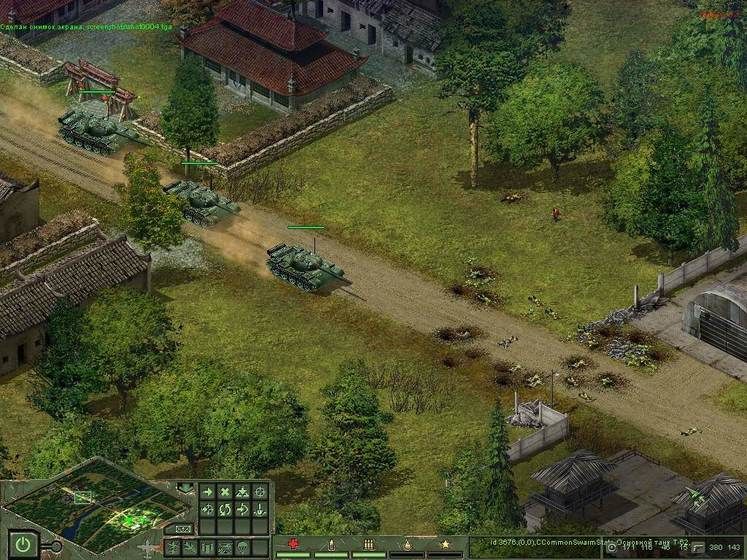Si: Hello, could you tell us about yourself?
Alexander Valencia-Campo: Hello, my name is Alexander Valencia-Campo and I’m game designer for The Day After in G5 Software. Before starting working on this project, I worked on the same position for Blitzkrieg and also took part in the development of Rage of Mages III: Evil Islands. So as you see, I worked mostly on strategies and it’s almost due to my game preferences - I prefer such genres as RTS, RPG, and MMORPG.
Si: Could you tell us what is the story that hides behind such a mysterious title?
Alexander Valencia-Campo: The Day After is an alternative description of what could happen after the day when there began The Third World War. Surely you remember the conflict between USSR and USA in 1962 – The Cuban Missile Crisis. It was a real threat to the whole mankind when Cuba became a sticking point in the cold war and leaders of two super powers – J.F. Kennedy and Nikita Khruschev – had to make a vitally important choice. Fortunately, the conflict was settled and The Third World War didn’t start. But with The Day After we offer to have a look at what could be if the nuclear missiles were finally launched and the world plunged into the war. Starting the game, the players will find themselves in the world after nuclear strikes. This alternative background gives us a chance to have a look at what could happen but never did. It’s a day which never began and I hope never will.
Si: Why the Caribbean Crisis?
Alexander Valencia-Campo: First of all, it was the most serious conflict between USSR and USA in the 20th century and to show its alternative development seemed to be very exciting. The second reason is its year - 1962 – the peak of arms race and as a result a heyday of military technology. Since WWII there appeared new kinds of weapons and taking into consideration that most of strategy games are about WWII, the new set of units – is a great advantage of The Day After. These reasons were the major ones in choosing this setting.
Si: Only the tactical part of the game is RTS. What does the player do between
battles?
Alexander Valencia-Campo: Yes, you are absolutely right. Only the one part of the game is RTS. The other part is TBS which is closely tied with the previous one. This combination brings a new level of realism giving more freedom in actions. I guess it’s clear with RTS and it’s time to raise the curtain over TBS component and how it is implemented in the game. Between battles in RTS mode you go to TBS which represents… No, I would better make a short example to make description more clear. So, imagine that you are a general and there are certain forces under your command. You are bending over the map, examining positions of enemy’s forces and your groups. This map represents a certain location, for instance some part of Europe. For example, this time you feel a certain lack of resources, let it be fuel for your units. So, on the enemy’s territory you see an oil-processing plant and you wish to capture it. You are selecting one of your groups on the map, or uniting some of them, and direct them to the plant. Your groups’ motion is limited for one turn as in any other TBS. So you make a turn and then AI makes it for the enemy. His groups can approach your forces or objects. Thus you’re move along the map and reaching the plant. The capturing of this plant is called a mission for strategic object. On the way to the plant you can face an enemy’s grouping and thus engage in one of random missions which are almost unlimited in number and are not obligatory for chapter’s finishing. As for missions for strategic objects (airdromes, stores, radars, plants, and others), they are also optional, but important for fulfilling your resources or strategic advantage. The only obligatory type of missions are scenario ones. Each chapter has one or two scenario missions which, in contrast to previous types, are much bigger and harder. Their accomplishment is vital for finishing the chapter. So, between battles, in TBS modes you move your forces fighting with enemy’s groupings, or capturing object, or engaging in scenario missions, and only after you reached this or that target you go directly to RTS mode to prove your strategic genius on the battle field itself.
Si: What has more impact on winning battles? The global or tactical aspect?
Alexander Valencia-Campo: Here you surely mean the importance of strategic decisions in TBS or tactical in RTS. If so, it’s really hard to say. As I have already mentioned in the previous answer, to complete the chapter the player will have to finish scenario mission/s and accordingly win in tactical aspect. But, for this successful accomplishment of these scenario missions, the player will need to act reasonably in global aspect – TBS mode. Before engaging in the last missions of the chapter, which are much harder than all the other, the player will obviously have to be “in a good form”. And to become in this form, the player will have to think what to do before scenario mission – capture the store in order to supply his units with repair parts, or maybe take the airdrome so as to provide air supremacy in the tactical mode. All this is up to the player, but he must always keep in mind, that these two modes – strategic (TBS) and tactical (RTS) – are closely tied and affects each other. You can’t be successive in this or that mode. You should be successive in both of them, otherwise you will lose.
Si: Is the technology in-game similar to the one available in 1962, the time when
the game events start?
Alexander Valencia-Campo: Yes, all the units are historically correct. As I have already said, the range of available units of that time is very wide but for certain reason we couldn’t represent all of them and had to choose and as a result there were chosen about 200 units. We wanted to depict them historically correct and that’s why we hired a historical consultant who gave us all the possible information. Also all the models of tanks and other units were coordinated with him.
Here I must say that some of them can provoke questions on their in-game presence. For example, soviet tank Object 279 which was developed especially for nuclear wars but was never launched in repetition work. The alternative setting we chose, I think gives us certain rights for such tricks and I’m sure that after using such interesting units the players will forgive us, especially since the technology also walks with long strides under such circumstances.
Si: Is the plot linear?
Alexander Valencia-Campo: It’s linear in campaigns, each of which has five successive chapters. Such construction gives an opportunity to tell the player what was planed by the authors. Nevertheless, the accomplishment of the chapter is not linear to some extent. I’ve mentioned in the previous answers that in TBS you can do what you wish: capture objects, attack enemy’s groupings, or go directly to the scenario mission. Random missions (casual battles) also make the in-chapter plot not entirely linear.
Si: Does losing one battle make you lose the war?
Alexander Valencia-Campo: No, it’s not like that. But each victory or defeat has its consequences and it’s all based on resources. While loosing the battle we are loosing resources, which we could use for the strengthening of our forces. Or, for example, if we’ve captured some enemy’s units in tactical mode, we will be able to exchange them for resources and then buy new units in strategic mode. Obviously, this economical element makes game play more exciting.
Si: Is there any multiplayer?
Alexander Valencia-Campo: Yes, there will be multiplayer for LAN and it will support up to 6 players.
Si: Would you like to add anything?
Alexander Valencia-Campo: I hope that this game will find its fans and there are several reasons for this hope. Some of them were already mentioned in the answers. It’ not about WWII, but dedicated to one of the most serious conflicts in the 20th century. Fortunately, we are using not real, but alternative history offering to have a look at the possible mankind’s past.
Si: Thank you for your time at Strategyinformer.com










